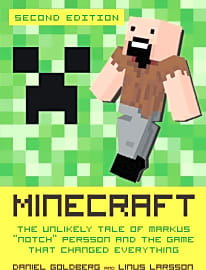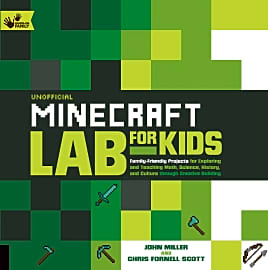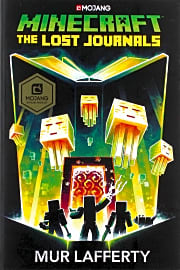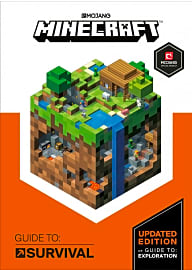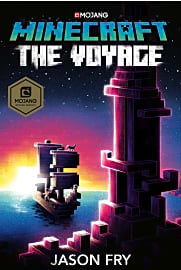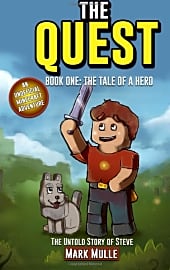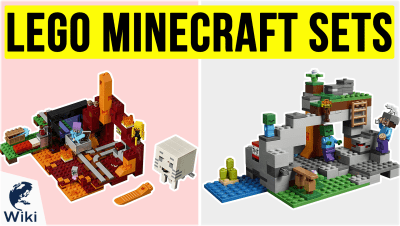The 10 Best Minecraft Books

This wiki has been updated 41 times since it was first published in December of 2016. With tens of millions of active monthly users, Minecraft is one of the most popular titles in the world. Its fun gameplay, colorful graphics, and focus on letting players build their own worlds have made it a huge hit. Whether you're looking for a guide to aid in your adventures or an exciting story set in the game's universe, these books are sure to make you appreciate the Overworld even more. When users buy our independently chosen editorial recommendations, we may earn commissions to help fund the Wiki.
Editor's Notes
June 23, 2020:
There are a few different kinds of books written about Minecraft. We've avoided recommending all but the most recent how-to guides, because they tend to go out of date relatively quickly, but the Guide to Survival is a recent release that still holds up well and is great for beginners who don't want to jump back and forth between the Minecraft Wiki and the game while they're actually playing. Of particular note is Minecraft: The Unlikely Tale of Markus "Notch" Persson, which is a non-fiction story of the beginnings of the game, and Notch's ultimate departure from Mojang as well as Mojang's sale to Microsoft. Despite being non-fiction, it's surprisingly interesting for both kids and adults. Another non-fiction offering that families will appreciate is the Unofficial Lab for Kids, which can help kids and parents or teachers to form meaningful and educational bonds through the game.
The majority of Minecraft-related titles, though, are fiction books set in the game's universe. There's not a ton of lore behind the game, which actually gives storytellers plenty of room to create their own tales. For years, unofficial books far outnumbered officially licensed works such as The Elementia Chronicles, but that's starting to change as Microsoft contracts with more and more well-established fiction authors. The Island by Max Brooks is one such title, and anyone familiar with Brooks won't be surprised at its quality. The End is another Microsoft-licensed work that blends immersive storytelling with surprisingly deep concepts of home and belonging. It's a good choice for those who are new to the game, while The Lost Journals offers comparable life lessons but is better suited to players with a bit of experience who will understand the references inside.
From popular young adult author Jason Fry comes The Voyage, which is a fantastical story about an unlikely hero, and it's another that requires a bit of game knowledge to really appreciate. Meanwhile, Diary of a Minecraft Zombie and The Quest are considerably simpler than many others, and good for young readers.
Special Honors
The Official Minecraft Wiki Due to the game's customizable and ever-changing nature, the official wiki is a great place to keep up to date on the newest features, mechanics, and mods. It's one of many online resources that can help players, and it's very likely the most comprehensive of them all. minecraft.gamepedia.com
How Minecraft Became One Of The Biggest Games In History
Eschewing flashy design elements, Persson used simple, blockish graphics to build a world in which players could explore, build, and experiment to their hearts' content.
If you've spent any time in the gaming section of your local big-box retailer, or if you've ever investigated what it is that keeps your nieces and nephews holed up in their rooms for hours at a time, then you've likely discovered the wonder that is Minecraft. Now that it has sold the second-most copies of any video game of all time, it's become the 800-pound gorilla on the gaming block...but its success belies its humble origins.
Unlike many best-selling video games, which require hundreds of experts to develop, the basics of Minecraft were created by a single indie designer, Markus "Notch" Persson. Persson had dreamed of making video games since he was a boy, and by the time he was in his 20s, it would seem as if he'd accomplished his dream, scoring gigs with two of Sweden's top game developers. Still, he was unsatisfied with the work he was doing, and wanted to do something more.
He wanted to make his own game.
He had long been fascinated by games that allowed players to create and inhabit their own virtual worlds, and wanted to expound on the concept. He loved the idea that players could create anything they could imagine, and wanted to make that dream into a gaming reality.
To pay the bills, he took a web developer job at Jalbum, a software company. While there he met Carl Manneh, the company's CEO, who would later prove instrumental in running the business side of things, allowing the game to explode into the phenomenon it has become.
Eschewing flashy design elements, Persson used simple, blockish graphics to build a world in which players could explore, build, and experiment to their hearts' content. He released it online, where it immediately became clear that he had a hit on his hands. The game spread like wildfire through word-of-mouth from excited players, and Persson and Manneh would capitalize on its success by founding the company Mojang, along with Persson's friend Jakob Porser.
In 2014, Notch got what some indie game developers dream of when Microsoft bought Mojang's Minecraft IP for an immense sum of money.
The Basics Behind Minecraft
The first thing that stands out about the game is how unique and customizable it is. Every new world that is generated is completely one-of-a-kind, so you will never play the same game twice. With replay factor being a major element of modern gaming, having a title that will always be new and fresh is quite the draw.
It's perfect for gamers who can lose themselves in their games for hours at a time, but also appeals to more casual players, as well.
The gameplay itself is fairly simple, but it's nonetheless extremely addictive. Think of it as having an unlimited supply of virtual Legos — you can build anything, compete against others (or not, if you don't want to), and watch your own little world come to life. Every single thing you see on the screen can be modified in some way, giving you complete freedom to tear down and rebuild the world to your liking.
There are several different modes of play from which you have to choose. The most basic is survival mode, in which you acquire resources to defend against randomly spawned enemies. You only have a set amount of resources, and you lose them when you die. There's also hardcore mode, which is just like survival mode except, well, hardcore. You can only die once, and when you do, the map is deleted.
If that's not your bag, though, you can play in creative mode, in which you're given unlimited resources and liberated from the threat of attack. This is perfect for people who just want to build and design, without necessarily trying to win at anything.
Another option is adventure mode, in which gamers can play on maps created by their peers, subject to the restrictions that each respective developer places on their world. Finally, spectator mode gives you the ability to see your world from the virtual inhabitants who have to live in it.
If it sounds simple, it is — and that's the genius behind it. The learning curve is short, and you can play for dozens of hours without running out of things to do or explore. It's perfect for gamers who can lose themselves in their games for hours at a time, but also appeals to more casual players, as well.
Using Books To Enhance Your Play
Since the game is so simple, it may seem counter-intuitive that you would need a book to play it. And while using books is certainly not a necessity to enjoy the game, some titles can take you deeper into your virtual world while also revealing tips and tricks you might not have discovered on your own.
A guidebook can show you things you didn't even know existed, and then demonstrate how to recreate them in your own virtual world.
Because the game is so vast, it's nearly impossible for one person to explore all that it has to offer. A guidebook can show you things you didn't even know existed, and then demonstrate how to recreate them in your own virtual world.
Think of it like a recipe book. Sure, you can probably cook just fine on your own, but if you never utilize the techniques that others have learned, you'll miss out on a large part of the culinary universe. These books act in a similar fashion, serving to enhance your exploration and creativity rather than to stifle it.
One of the most attractive qualities about the game is how many people are playing and developing it at the same time. Of course, that also means that it can advance at the speed of light, so unless you devote your waking life to playing it (and trust me, you'll be tempted), having an updated guidebook will keep you abreast of some of the new improvements that are constantly being made.
And, hey — the biggest benefit of all may be that reading about Minecraft might be the only thing that can get you to stop playing it.



